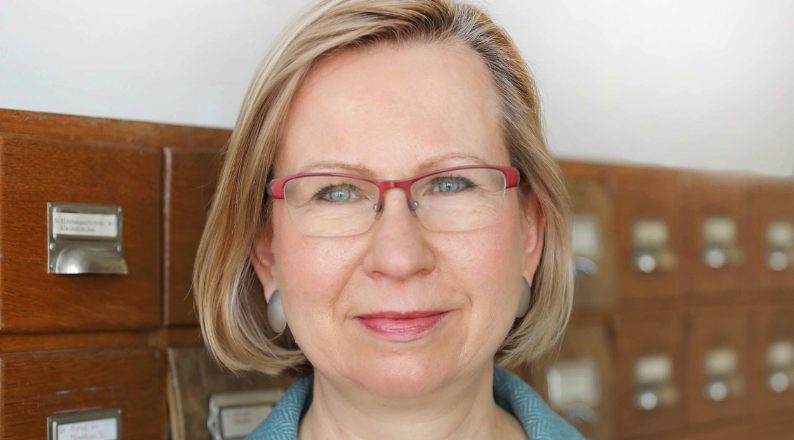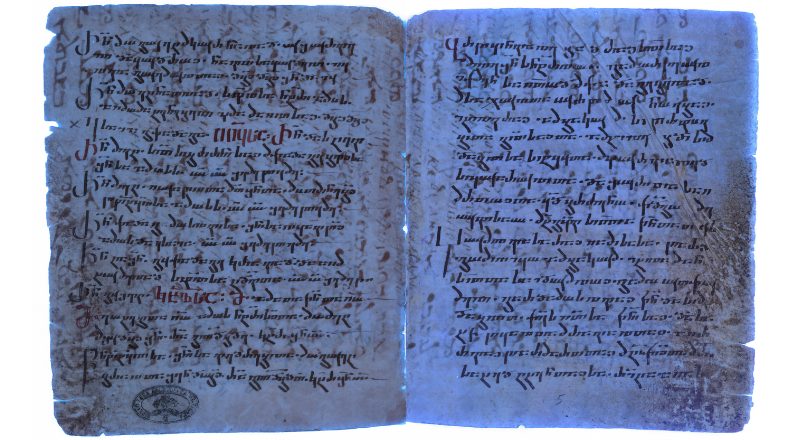(ZENIT News / Vienna-Vatican City, 04.14.2023).- Some 1,300 years ago, a Palestinian scribe picked up an inscribed Gospel with a Syriac text and erased it. Parchment was scarce in the desert in the Middle Ages; hence, manuscripts were frequently reused. A Medieval researcher of the Austrian Academy of Sciences (ÖAW) has now been able to make legible again the lost words of this layered manuscript, called palimpsest: thus Grigory Kessel has discovered in individual surviving sheets of this manuscript one of the first translations of the Gospels, created in the 3rd century and copied in the 6th century.
One of the Oldest Fragments that Attest to Ancient Syriac Writing
“Syriac Christian tradition has various translations of the Old and New Testament,” said the ÖAW’s medievalist Grigory Kessel. “Known only up to a short time ago were two manuscripts that contained the ancient Syriac translation of the Gospels.” Whereas one of them is now kept in the British Library in London, another was discovered as palimpsest in Saint Catherine’s Monastery in Mount Sinai. The Sinai Palimpsests Project has recently identified the fragments of a third manuscript.

The small manuscript fragment that has been found, can now be considered a fourth textual witness. Grigory Kessel used ultraviolet photography to identify it as a third textual layer, namely, a double palimpsest, in a manuscript of the Vatican Library. The fragment is up to now the only remains known of the fourth manuscript that attests to the ancient Syriac version, and offers a unique access to the earliest phase of the history of the textual transmission of the Gospels.
Indeed, the more translations that are known, the more scholars will know about the original text of the Gospels. For example, whereas the Greek original of Matthew’s Gospel, chapter 12, verse 1, reads: “At that time, Jesus went through the grainfields on the sabbath; and His disciples were hungry, and they began to pluck ears of grain and to eat,” the Syriac translation reads: “[. . . ] they began to pluck ears, they rubbed them with their hands and ate.”
Syriac Translation Earlier Than the Sinaitic Codex
Claudia Rapp, Directress of the Institute of Medieval Studies of the Austrian Academy of Sciences, is also satisfied: “Grigory Kessel has made a great find thanks to his profound knowledge of the ancient Syriac texts and the characteristics of the writing,” she said. The Syriac translation, which goes back to the 3rd century, was written at least a century before than the oldest Greek manuscripts kept, including the important Codex Sinaiticus. And the oldest manuscripts that are kept with this Syriac translation date back to the 6th century and are kept in palimpsests.

“This discovery demonstrates how productive and important the interaction of the advanced digital techniques can be in basic research when we come across Medieval manuscripts,” added Claudia Rapp.
Information on the Project
The objective of Sinai Palimpsests Project is that the valuable palimpsests manuscripts of Saint Catherine’s Monastery of Egypt, of several centuries of antiquity, are legible again and are available in digital format. Up to now, 74 manuscripts have been deciphered. Claudia Rapp, of the University of Vienna and the Austrian Academy of Sciences (ÖAW) is the scientific Directress of the project.
With information of the Austrian Academy of Sciences.



